RARE! WWII 1944 Operation Reckless Task Force Cape Kassoe - New Guinea "SPECIAL INVASION MAP" Assault on Hollandia and Sentani Airfields

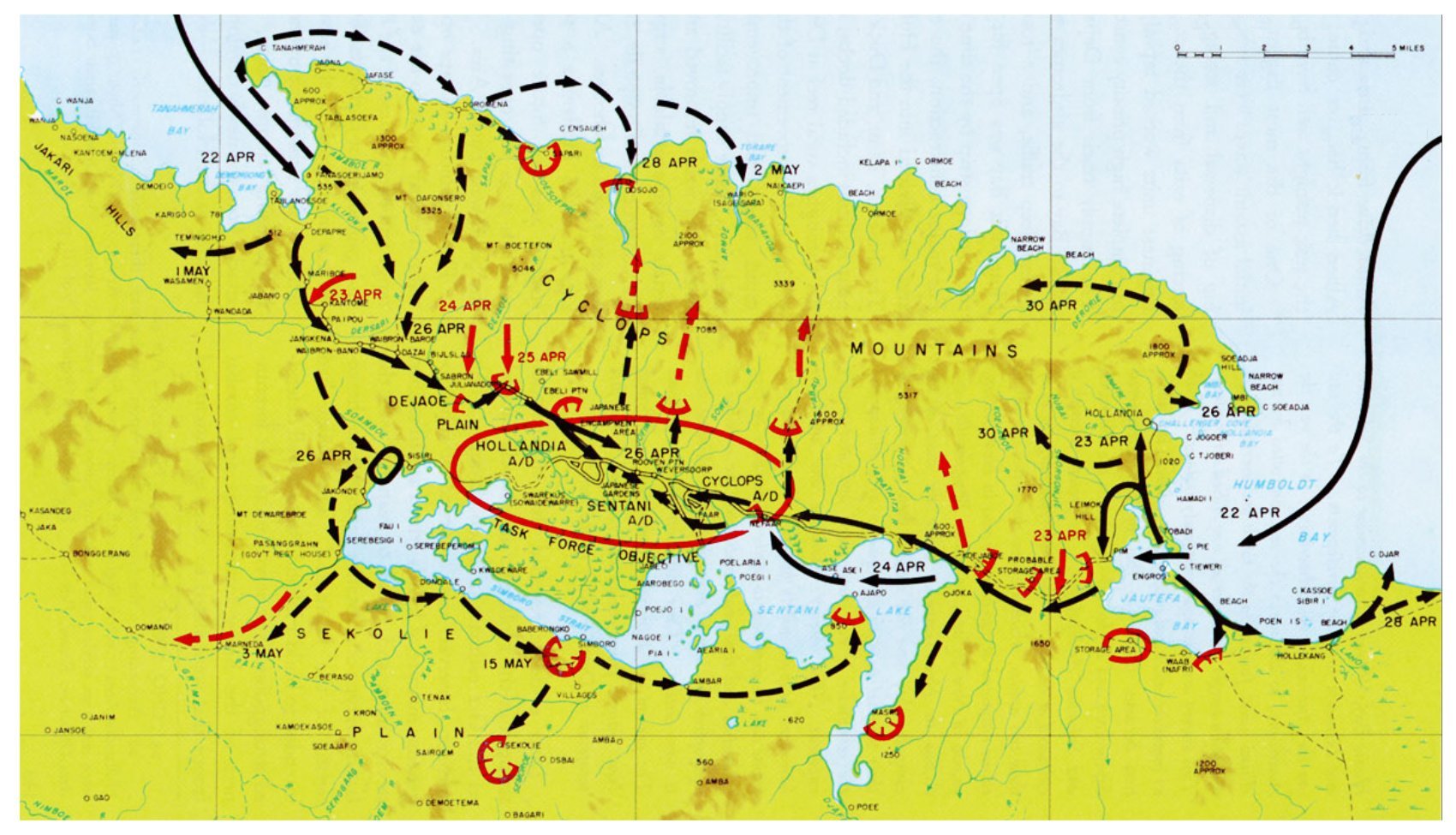
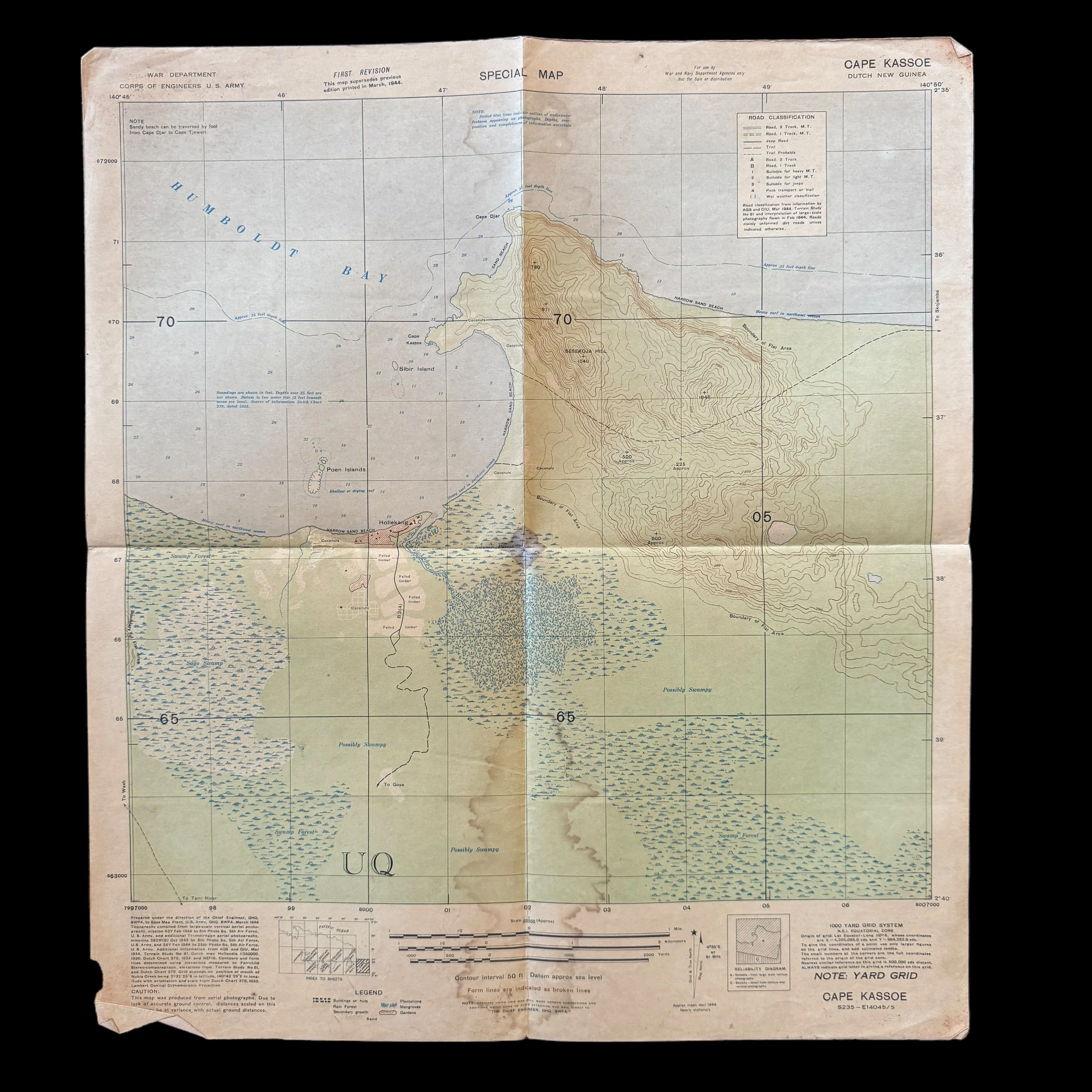







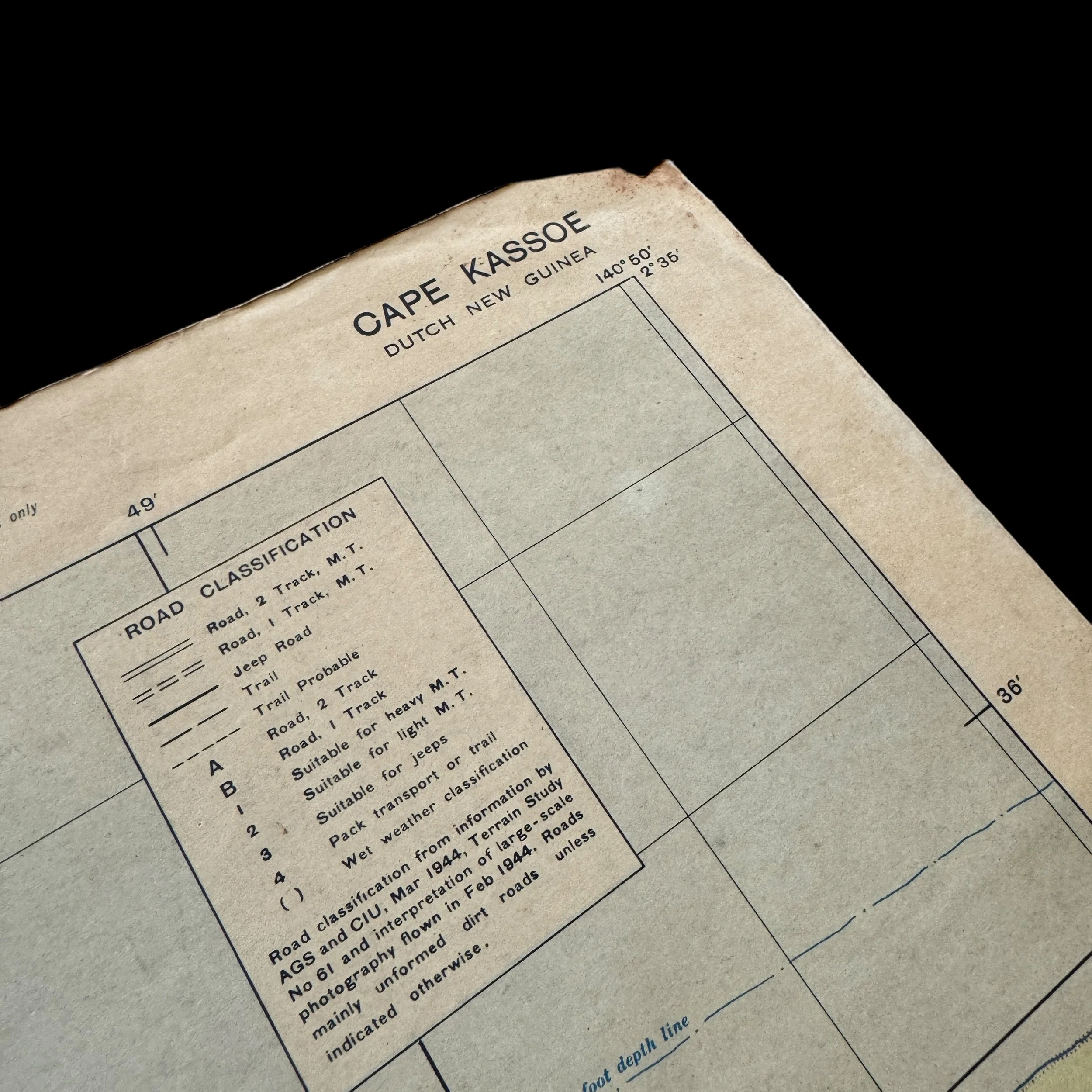
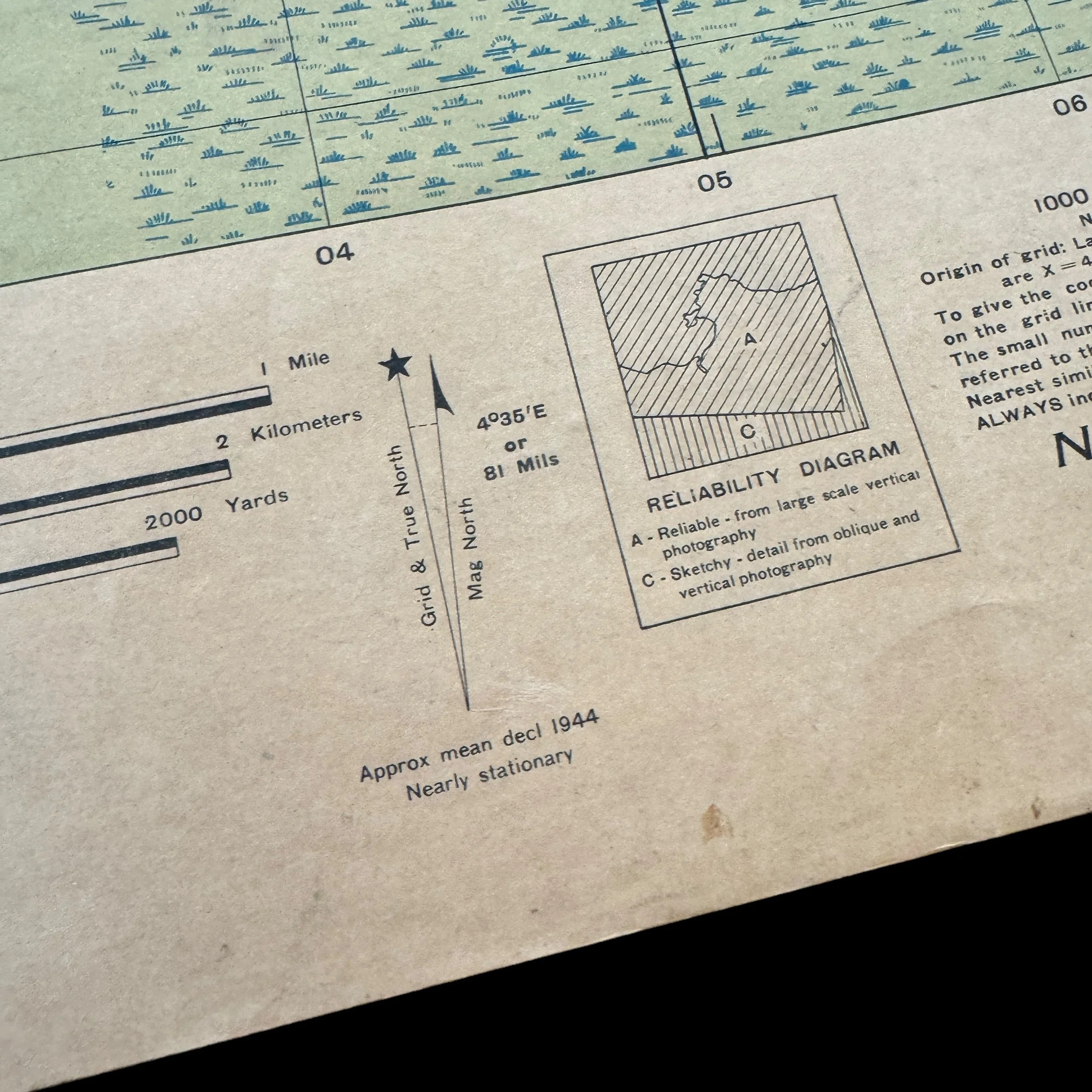






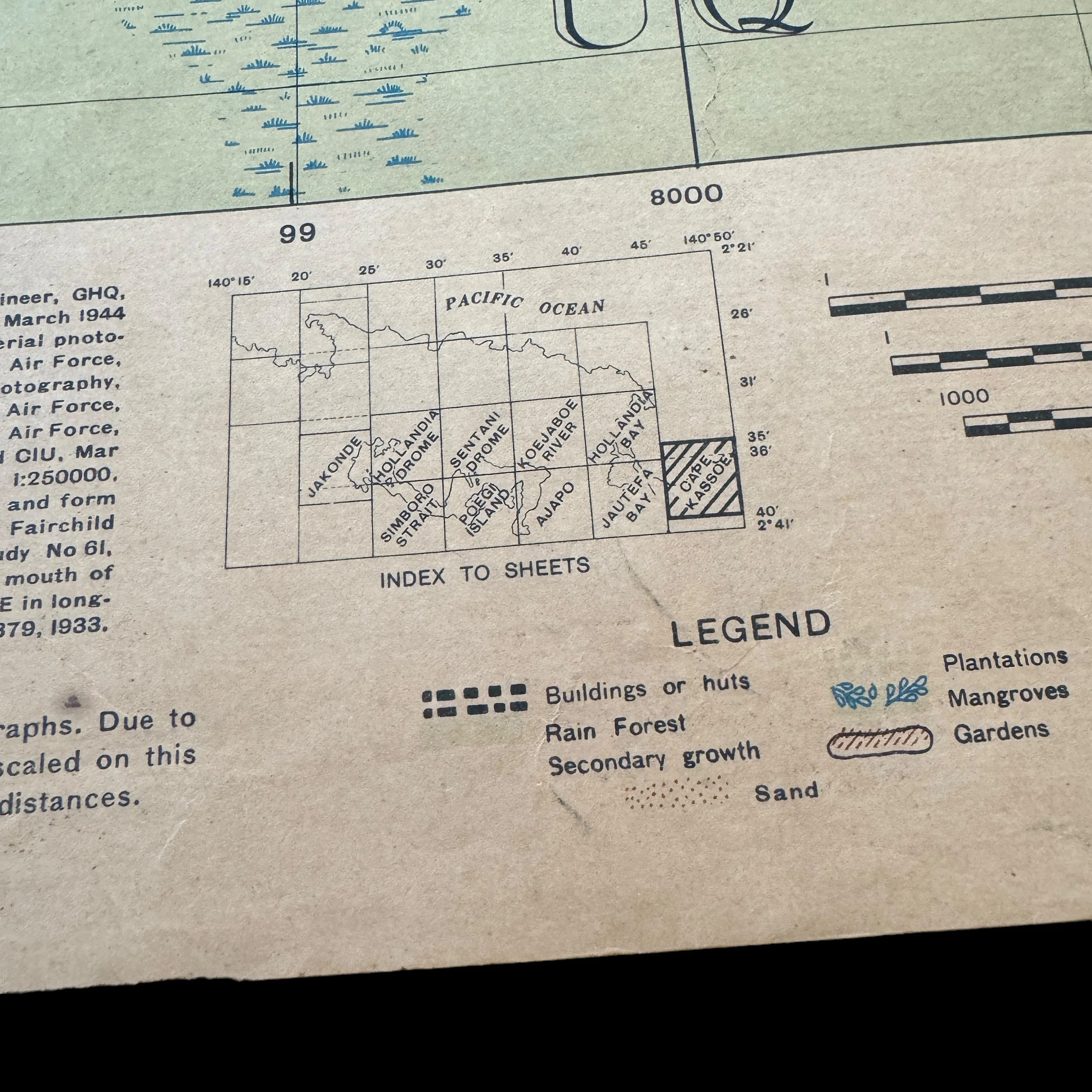








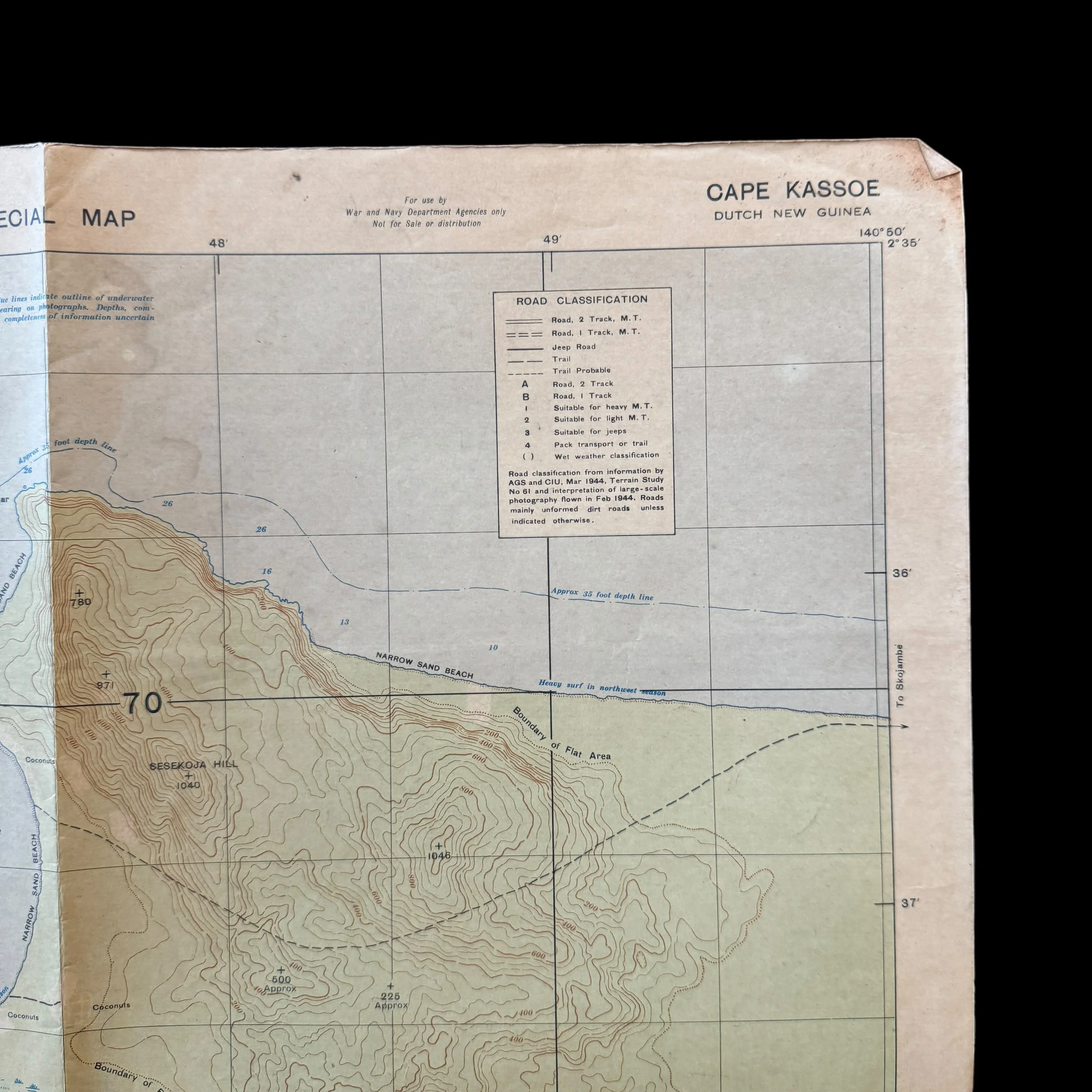
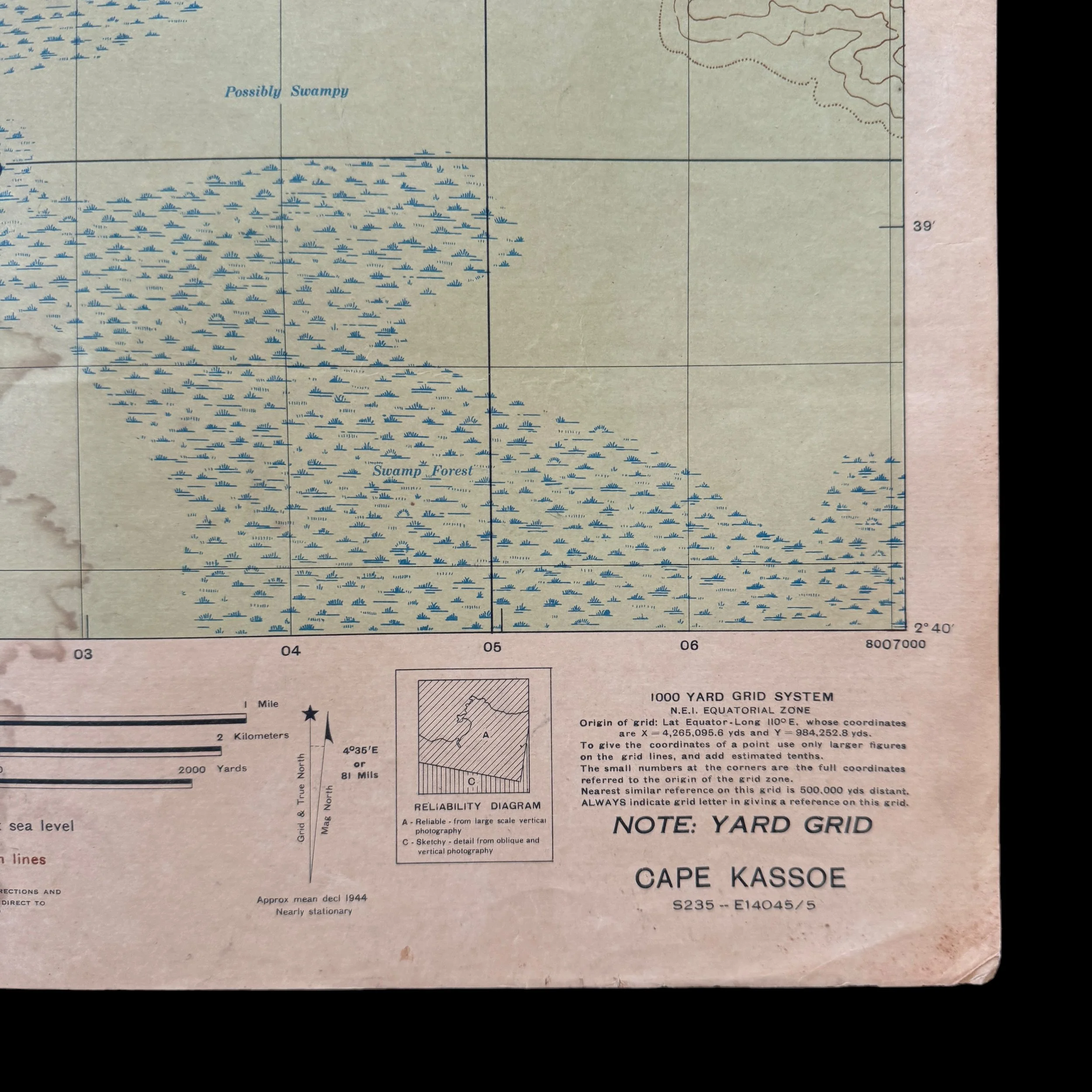


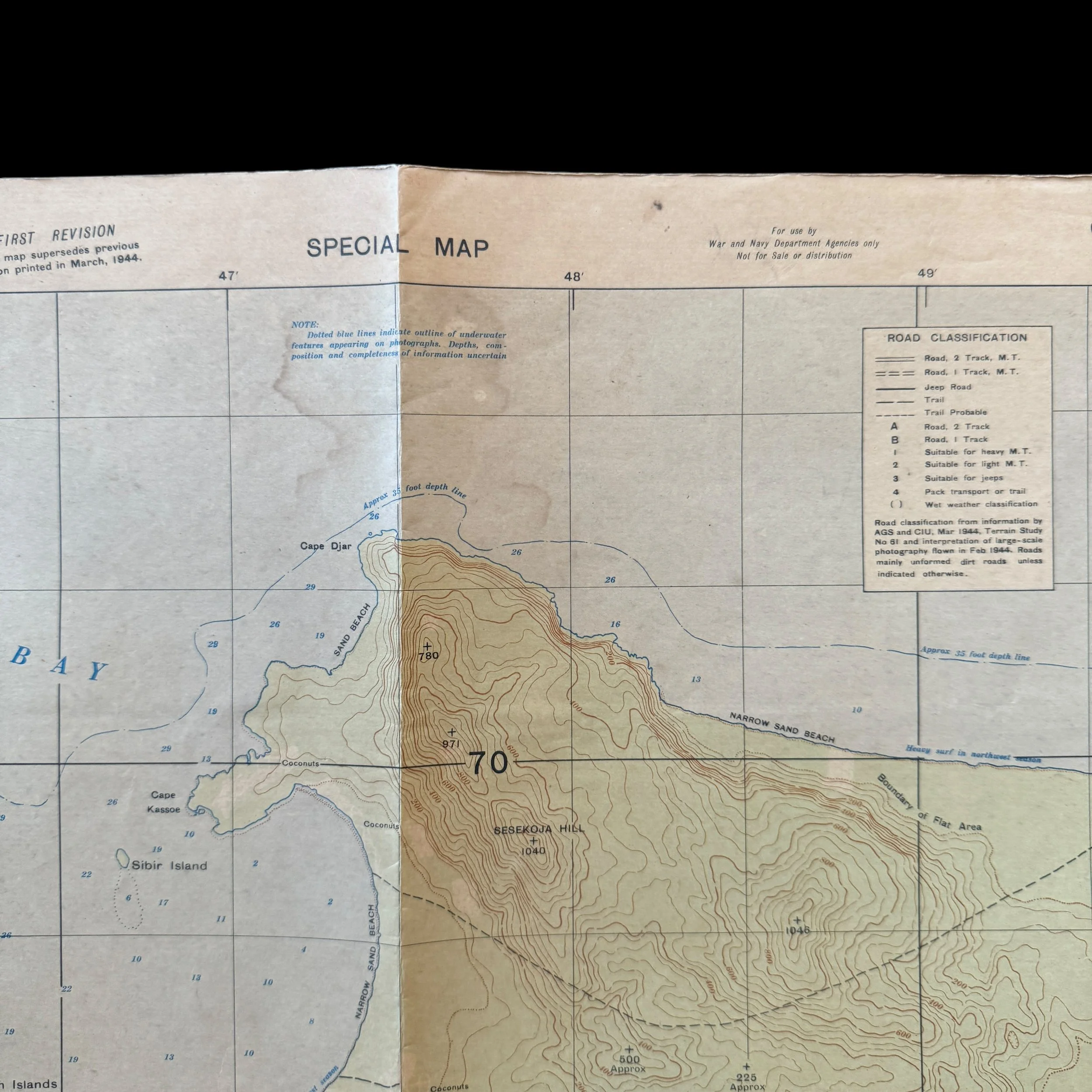







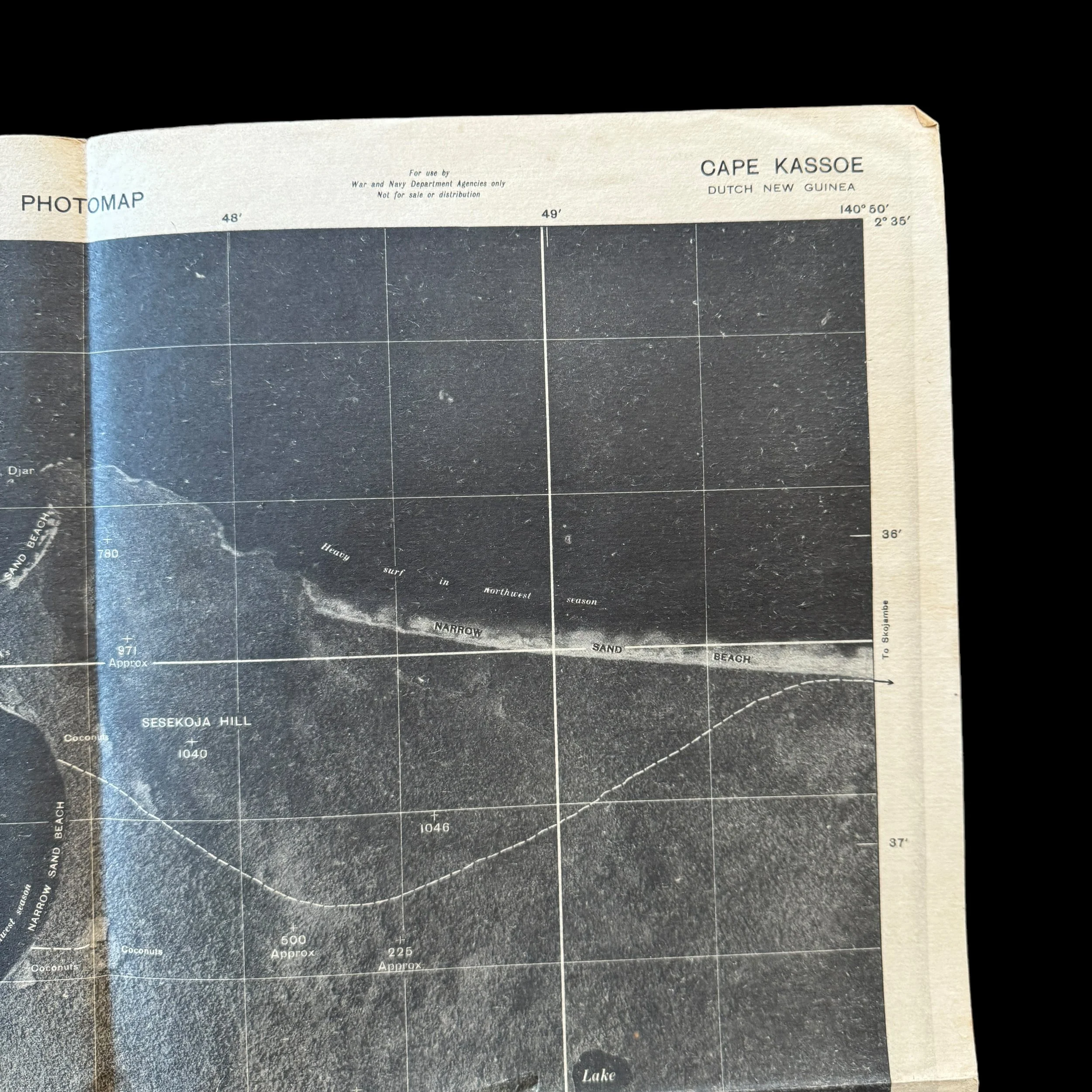


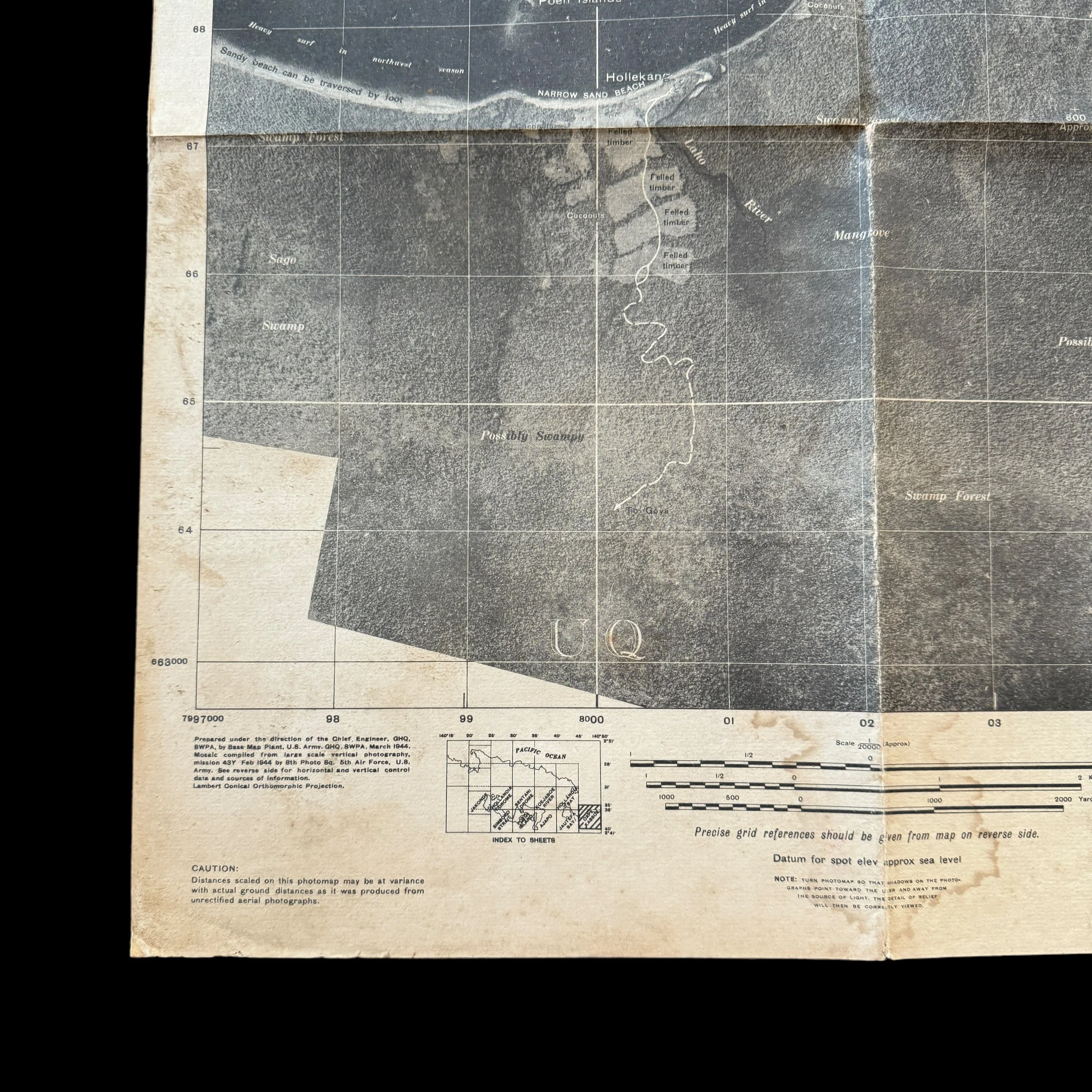




RARE! WWII 1944 Operation Reckless Task Force Cape Kassoe - New Guinea "SPECIAL INVASION MAP" Assault on Hollandia and Sentani Airfields
Comes with a hand-signed C.O.A.
Size: 20 x 22 inches
This incredibly rare and museum-grade WWII artifact is an original and heavily used 1944 dated combat operations map used during Operation Reckless and the Allied Campaign in Hollandia and Sentani, New Guinea (Pacific Theater). What makes this New Guinea invasion map so rare is that this was printed in March 1944 (one month before the Operation Reckless D-Day landing assault on the Hollandia area in April 1944. Prepared under the direction of the Chief Engineer this extremely rare double-side Hollandia New Guinea amphibious invasion map and rare ‘AERIAL SUPPORT PHOTO’ map was used in support of the Operation Reckless Task Force assault on the Japanese held airfields around the Hollandia Airfield and Sentani Airfield. The U.S. 8th Photo Squadron, 5th Air Force constructed this map from large-scale vertical area photograph missions. This “SPECIAL MAP” print also features a rare ‘PHOTO MAP’ on the backside showing a realistic view of the New Guinea terrain. These backside special ‘PHOTO MAPS’ are not common and are generally reserved for special divisions and operations.
Operation Reckless: The Liberation of Hollandia and Sentani Dromes in New Guinea
Operation Reckless, one of the pivotal campaigns in the Pacific Theater during World War II, marked a significant turning point in the Allied efforts to liberate New Guinea from Japanese occupation. This operation, which targeted the strategic areas of Hollandia and the Sentani Dromes, along with the surrounding region of Cape Kassoe, was crucial in disrupting Japanese supply lines and establishing a base for further Allied operations in the Pacific.
Strategic Importance of Hollandia and Sentani
Hollandia, located on the northern coast of New Guinea, was a critical Japanese stronghold. Its strategic position made it a key logistical and operational hub for Japanese forces. The Sentani Dromes, a group of airfields near Lake Sentani, were vital for Japanese air operations, providing a base for aircraft that could strike at Allied positions and shipping lanes. The capture of these airfields was essential for the Allies to gain air superiority in the region.
The region around Cape Kassoe, a prominent point on the coast near Hollandia, also held strategic importance. It provided a potential landing site for amphibious operations and offered a vantage point for controlling the surrounding waters.
Planning and Preparation
Operation Reckless was meticulously planned under the command of General Douglas MacArthur. The primary objective was to capture Hollandia and the Sentani Dromes, thereby cutting off Japanese forces in the western part of New Guinea and isolating their remaining positions. The operation was to be executed simultaneously with Operation Persecution, which targeted Aitape to the east, ensuring a coordinated effort to overwhelm Japanese defenses.
Intelligence played a crucial role in the planning phase. The Allies used aerial reconnaissance and intelligence reports to assess Japanese fortifications and troop deployments. This information was vital for determining the landing sites and the approach routes for the amphibious assault.
The Invasion
On April 22, 1944, the assault on Hollandia and the Sentani Dromes commenced. The operation involved a massive amphibious landing, with troops from the U.S. 24th and 41st Infantry Divisions spearheading the attack. The landings were supported by a formidable naval task force, which provided bombardment to soften Japanese defenses and protect the landing forces.
The landings were executed with remarkable precision. The Allies chose landing sites at Tanahmerah Bay and Humboldt Bay, which provided access to the main objectives while minimizing exposure to Japanese defenses. The landings at Tanahmerah Bay, near Cape Kassoe, were particularly challenging due to the rugged terrain and the presence of Japanese fortifications.
Despite these challenges, the Allied forces quickly secured the beachheads and began their advance inland. The Japanese defenders, taken by surprise and overwhelmed by the scale of the assault, offered limited resistance. The rapid advance of the Allied troops prevented the Japanese from organizing a coherent defense, and within days, the Allies had captured the Sentani Dromes and the town of Hollandia.
The Aftermath and Strategic Impact
The success of Operation Reckless had far-reaching consequences for the Pacific campaign. The capture of Hollandia and the Sentani Dromes provided the Allies with a critical base of operations, enabling them to launch further offensives in the region. The airfields at Sentani allowed Allied aircraft to dominate the skies over New Guinea, providing air cover for subsequent operations and disrupting Japanese supply lines.
The operation also demonstrated the effectiveness of Allied amphibious warfare tactics and the importance of intelligence and planning in executing large-scale operations. The lessons learned from Operation Reckless were applied in subsequent campaigns, contributing to the eventual Allied victory in the Pacific.
In addition to its strategic impact, Operation Reckless had a profound effect on the morale of Allied forces. The successful capture of a major Japanese stronghold bolstered confidence and demonstrated the Allies' growing dominance in the Pacific Theater. It also underscored the importance of coordination and joint operations between different branches of the military.
Cape Kassoe and its Role
Cape Kassoe, though not as heavily fortified as other areas, played a significant role in the success of the operation. The landing at Tanahmerah Bay, near Cape Kassoe, provided a crucial foothold for the Allied forces. The relatively less defended area allowed the Allies to establish a beachhead with minimal casualties, facilitating the rapid advance towards the main objectives.
The control of Cape Kassoe also allowed the Allies to secure the surrounding waters, ensuring the safe passage of additional troops and supplies. This logistical support was essential for sustaining the momentum of the operation and ensuring the continued success of the Allied advance.
Operation Reckless was a decisive campaign that significantly altered the course of the Pacific War. The successful capture of Hollandia, the Sentani Dromes, and the surrounding region, including Cape Kassoe, crippled Japanese operations in New Guinea and provided the Allies with a critical base for future offensives. The operation showcased the effectiveness of Allied planning, intelligence, and amphibious warfare tactics, setting the stage for further successes in the Pacific Theater.